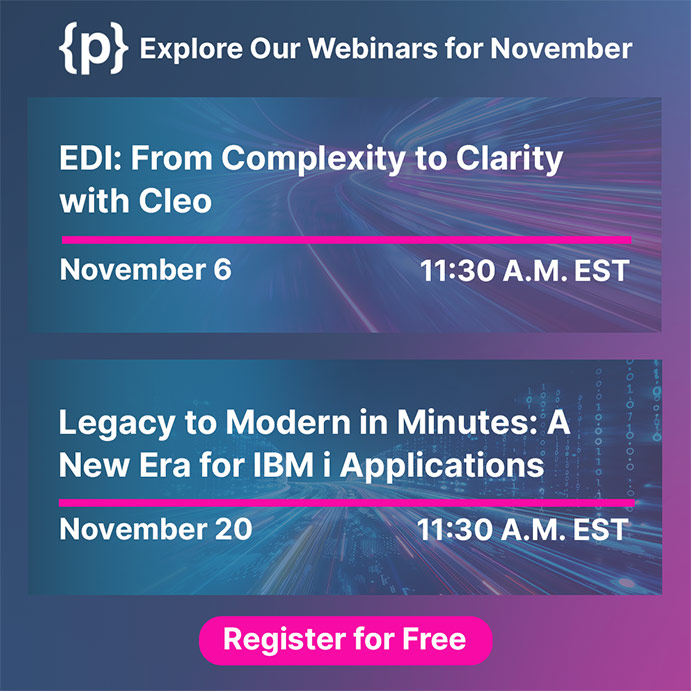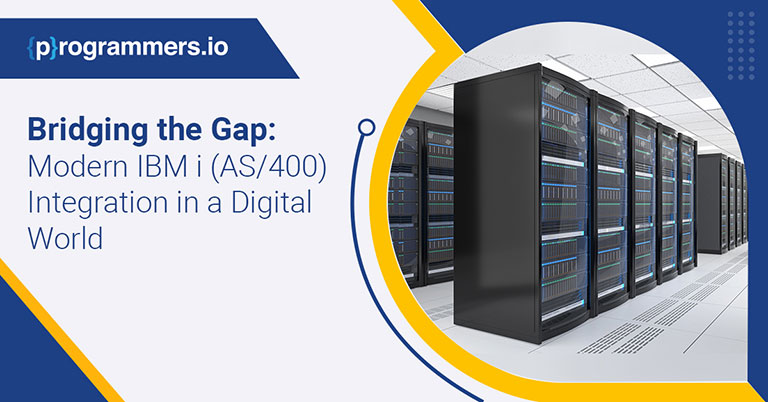IBM i (yep, what many still fondly call the AS/400) is still a beast when it comes to reliability, security, and scalability. But in today’s fast-moving tech world, it can’t live in isolation. Companies need to connect their trusted IBM i systems with cloud platforms, modern apps, and real-time data environments.
In this article, we’ll walk through some not-so-talked-about strategies and best practices for integrating IBM i into today’s digital ecosystem—real-world examples included.
Why Integration Matters More Than Ever
Integrating IBM i with modern systems isn’t just about keeping up with the times—it’s about staying competitive. Here’s how it helps:
- Modernize without starting from scratch: You don’t have to replace everything. Integration helps extend the life (and value) of your legacy apps.
- Talk to today’s tech: Whether it’s cloud, mobile, or microservices, integration lets your IBM i systems speak the same language.
- Be more agile: Need to pivot quickly? Integrated systems make it easier to roll out new features or scale on demand.
The Case for IBM i Integration
Today’s organizations run on a mix of platforms and apps. IBM i can’t be an island. Here’s why bringing it into the fold is essential:
- Operational Efficiency: Say goodbye to duplicate data entry and manual workflows.
- Data Consistency: Ensure every system works from the same up-to-date information.
- Enhanced Capabilities: Combine the best of IBM i with the flexibility of new tech.
Common Integration Challenges
Let’s be real: integrating IBM i isn’t always a walk in the park. Here’s what usually gets in the way:
- Old-school code: A lot of IBM i apps run on RPG or COBOL, which aren’t exactly plug-and-play with modern tools.
- Data silos: DB2 for i often doesn’t play nicely with cloud apps out of the box.
- Security & compliance hurdles: These systems are locked down tight—for good reason—but it can complicate access.
- Talent gaps: It’s tough to find developers who understand both legacy and modern environments.
Modern Integration Strategies
Let’s dig into some forward-thinking (and practical) ways to make IBM i integration work.
1. API Everything
Turn your IBM i into a service-oriented machine:
- RESTful APIs with IWS: Expose RPG/COBOL logic via REST or SOAP.
- Kafka + Zookeeper: Stream data in real time to microservices and event-driven platforms.
- InfoConnect for Kafka: A handy way to send IBM i data to modern platforms using Kafka.
- Low-code integration: Tools like MuleSoft and Boomi simplify API orchestration.
- InfoConnect for MuleSoft: Purpose-built to integrate IBM i with modern ecosystems securely.
2. Real-Time Data Access
Get your data moving—securely and instantly:
- ODBC/JDBC: Real-time bridges between IBM i’s DB2 and modern databases.
- Db2 Mirror for i: Keep systems in sync with high availability.
- Hybrid cloud replication: Move data to the cloud without missing a beat.
- InfoCDC: Move data to the cloud without missing a beat.
3. Cloud-Ready Connections
Secure, scalable, cloud-friendly:
- IBM Cloud & AWS Lambda: Trigger IBM i jobs from the cloud.
- Open Source power: Use Python, Node.js, or PHP on IBM i.
- OAuth/JWT: Secure API connections to external systems.
- InfoConnect Hub: A central integration hub for connecting IBM i with modern apps.
4. Legacy App Modernization
Bring your green screen apps into the 21st century:
- Refactor RPG/COBOL: Free-form RPG or integrations with Java/.NET microservices improve flexibility.
- GUI upgrades: Tools like Profound UI and Newlook add web interfaces.
- Containerization: Run IBM i workloads in containers with OpenShift.
5. RPA for IBM i
Automate the repetitive stuff:
- Data entry automation: Bots that interact with green screens and APIs.
- Workflow automation: Platforms like UiPath and Automation Anywhere connect IBM i into broader workflows.
- Smart document handling: Use AI to read and feed data into IBM i apps.
Real-World Use Cases
Here’s what IBM i integration looks like in action:
- Retail: A global retailer boosted order processing by 40% by connecting IBM i to their e-commerce platform using REST APIs.
- Healthcare: A hospital linked IBM i patient data with AI tools for diagnostics, speeding up decisions and reducing errors.
- Banking: A finance firm containerized its IBM i loan system, enabling mobile banking and cutting costs.
What’s Trending in IBM i Integration
- API-first development: APIs are the new standard for making IBM i data and functions available.
- Event-driven architecture: Let IBM i respond to real-time business events.
- Integration platforms: Tools like MuleSoft are becoming go-to choices for streamlined connectivity.
Looking Ahead: What’s Next?
Integration isn’t slowing down—here’s where it’s heading:
- AI & machine learning: IBM i + AI = smarter business processes.
- Blockchain: Secure, traceable transactions via Hyperledger Fabric.
- IoT & 5G: IBM i’s role in managing connected devices at the edge.
- More APIs, more cloud: Expect continued growth in API-based and cloud-native integrations.
Career Outlook
This is a hot field. Roles in demand include:
- Integration developers: Experts in APIs and middleware.
- System architects: People who can design end-to-end integration frameworks.
- Consultants: Advising companies on how to bring IBM i into the modern world.
Wrapping Up
IBM i integration isn’t just a technical necessity—it’s a strategic move. By tapping into APIs, cloud tools, and automation, businesses can preserve the rock-solid reliability of IBM i while gaining the flexibility to innovate. Companies that invest in integration today will be better prepared to handle the demands of tomorrow’s tech landscape. Call us today to get AS400 integration services by our experts having years of experience.




